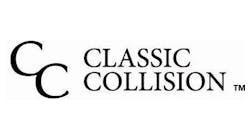Bob Juniper learned the collision repair technician trade through an apprenticeship program he worked in during high school.
When he was 14 years old, Juniper started working at his father’s shop, Three-C Body Shop Inc., in Columbus, Ohio, and when he graduated in 1976, he went to work for his father full-time. Since he had been working half days at the shop since his freshman year of high school, Juniper was a “half-decent body technician” by the time he was hired on full-time in the family business, he says.
Juniper took over the business when his father retired and by the early 2000s, he had 13 shops (he’s since downsized to three).
During that time, he learned what it was like to not have enough people to hire to keep up with the demand of the business. The rapid growth period was the time that Juniper decided to start an apprenticeship program.
For Erick Bickett, industry veteran and franchise owner of Fix Auto, he wanted to start an apprenticeship program to counteract the technician shortage he saw.
“The reality is, there are very few opportunities for people to enter this business and introduced to a solid knowledge transfer,” Bickett says.
He started to brainstorm how he could form a program that had structure and also bridged the gap from the technician’s education to working in a fast-paced, high-production environment like a shop.
Bickett started working with Amber Ritter, chief operations officer for the Collision Career Institute, six years ago on a development pilot program for apprentices and, two years ago, the duo and other associates at Fix Auto formed the Collision Career Institute. Since then, the Institute has placed 18 apprentices and has expanded to work with other MSO's as well as one small independent shop. 10 of those apprentices were placed at eight of Bickett's locations.
Today, Juniper’s shop has roughly 7 apprentices. Juniper keeps seeing the baby boomer generation leaving the industry and retiring, and, in their place, an influx of employees who are savvy with computers.
“I’m probably the only guy in Columbus, Ohio, who has hired more technicians than we currently need,” Juniper says. “I continue to hire more and overload on technicians.”
Bickett and Juniper have formed programs that not only eliminate the technician’s need to relearn once inside a shop, but also have a set structure that promotes internal growth within the shops.
Eliminating the Need to Relearn
Juniper noticed a pattern: He would hire a technician and the technician’s training would be behind in terms of technology and equipment being used in shops.
“Kids today come out of school and have to relearn the processes because the technology has all changed,” Juniper says.
Ritter says the Fix Auto locations also saw an issue in which the technician didn’t have the necessary skills to put his or her knowledge to practical use. For example, technicians did not know how their work affected overall cycle time or other shop KPIs, and how to work with the paint department during the repair.
So, Juniper decided to create a program in which he could hire technicians and have them shadow the lead technicians in the shops. Then, the technician would get paid while learning the trade. At the same time, Juniper would keep the shop updated on the latest collision repair technology and tools.
For the first year of the program, Juniper pays the apprentices $10 per hour. The second year, that salary increases to $12 per hour. Once the apprentices go through the program, he hires them at the shop. Eventually, if the new hires are patient, the technicians can earn a salary of $80,000, Juniper says.
Through the Collision Career Institute’s apprenticeship program, an apprentice can sign up and learn how to become an administrative employee, painter, part of management or body technician, Bickett says. Then, the apprentices go through six phases including a bootcamp phase. Each phase takes three months to complete. If an apprentice already has some basic skills or has completed some type of technical college program, then he or she will be placed in the phase that correlates to their skill level.
Everyone in the Collision Career Institute’s program enters with the knowledge that if they pass the assignments, assessments and retain knowledge from previous phases while completing the current phase, they will receive payment increases.
“They know it’s a transparent process and if they complete the segments, they’ll receive incremental bumps throughout the program,” Ritter says.
Designing the Apprenticeship Program
Currently, Juniper’s shop employs six to nine apprentices. After a year, roughly a third of the apprentices are ready to become technicians and are assigned a position under a journeyman technician, Juniper says.
Juniper says that students applied for the program after hearing about it from friends and family. He did not partner with local schools because there were enough people interested merely from being a family member of someone already on staff or a friend of a friend.
During the formulation of the program, Juniper says that schools and colleges in the Columbus, Ohio area stopped offering collision repair training programs.
“I believe the industry is getting too technical,” Juniper says.
Despite relying heavily on word-of-mouth, Juniper does advertise the program in the community. He puts 7 percent of his sales toward marketing and markets the program on the local radio stations. He’s redone the shop’s website to cater to women and bring more diversity in the industry, as well as display billboards in the town.
The Three-C Body Shop technicians are primarily trained through assigned tasks, guidance from their journeyman technician and collision repair manuals. Juniper has the technicians go through the training manuals now and then, or when there is downtime.
The Collision Career Institute’s apprenticeship program is designed to have courses, time elements and phase assessments. The program runs for roughly 18 months.
For every apprentice that is hired, the apprentice goes through a vetting process to make sure he or she is someone who is dedicated to the job, Bickett says. For instance, the apprentice goes through an interview with the management of the Institute and then another interview with the shop management. Then, the apprentice is evaluated for eight weeks so that management can determine if he or she can work well in that particular shop environment.
“You’re going to spend a bunch of time and money on them,” Bickett says.
During those weeks, the shop operator and any head of departments in the shop should evaluate if the technician shows up to work on time, what his or her work ethic is like, and how committed he or she is to the job.
Some of the existing employees at the Bickett’s Fix Auto locations enter the apprenticeship program in order to move into a different role at the shop or work his or her way up more succinctly through the 18-month program.
The apprentice in Bickett’s program shadows a journeyman technician or someone else in the shop and also learns through online courses, as well. Ritter says the online courses balance the “sometimes overwhelming” knowledge that can be given from a technician who has over 20 years of experience in the industry.


